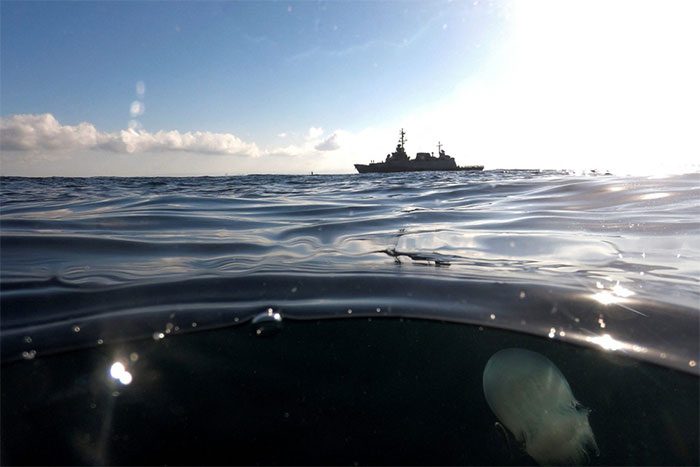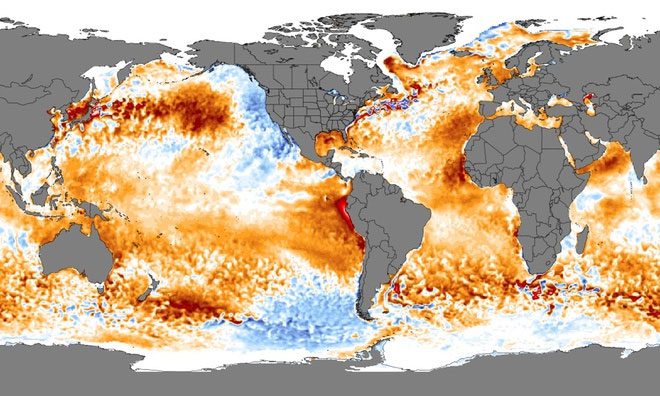Scientists warn that global warming will reduce the oceans’ ability to absorb carbon while increasing the risk of extreme weather events.
Data from the U.S. government indicates that global ocean surface temperatures have reached an all-time high since satellite measurements began, leading to marine heatwaves worldwide, according to a report by The Guardian on April 8.

A jellyfish swimming underwater as an Israeli military ship moves near the coast of Haifa in the Mediterranean Sea. (Photo: Reuters).
Climate scientists report that preliminary data from the National Oceanic and Atmospheric Administration (NOAA) shows that the average ocean surface temperature since early April has reached 21.1 degrees Celsius, surpassing the previous record of 21 degrees Celsius set in 2016.
The data is primarily collected through satellite observations but is also verified through measurements from ships and buoys.
“The current temperature trajectory is off the charts, continuously breaking previous records,” said Professor Matthew England, a climate scientist at the University of New South Wales.

Sea temperature map using data from NOAA. (Photo: University of Maine).
The three years of La Niña have helped cool the surface of the Pacific Ocean and mitigate the effects of greenhouse gas emissions. However, scientists believe that El Niño may re-emerge later this year, increasing the risk of extreme weather and setting new global temperature records.
A study from last year found that the oceans are accumulating more heat, fueling extreme weather patterns.
“What is surprising is that the last three years have also been quite warm, despite the presence of La Niña. Now it’s warmer, and we are recording what appear to be record temperatures,” said Alex Sen Gupta, an associate professor at the UNSW Climate Change Research Centre.
Current observations indicate moderate to strong marine heatwaves in several areas, including the southern Indian Ocean, the South Atlantic, off the northwest coast of Africa, around New Zealand, offshore northeastern Australia, and western Central America.
“It is unusual to see so many extreme marine heatwaves occurring simultaneously,” Mr. Sen Gupta noted.
Marine heatwaves significantly impact marine life and cause coral bleaching. Experiments show that warming oceans also alter food webs, promoting the growth of algae while restricting the development of species that humans fish for food.


















































